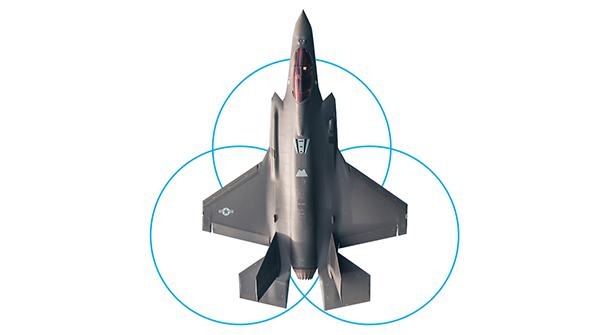Opinion: The F-35 Is At The Center Of Hard And Soft Power

Late last year, Boeing CEO Dave Calhoun publicly stated that a new clean-sheet aircraft would not be released this decade. This news came as Boeing, formerly the world’s largest aerospace company, is awaiting FAA certification of its 737 MAX 7 and MAX 10, and many are wondering if those certifications will happen at all. Additionally, Boeing has continued to report multibillion-dollar losses on its defense programs such as the KC-46 tanker, VC-25B presidential transport, MQ-25 uncrewed aerial refueler and T-7A trainer. With the aerospace giant seemingly in pause mode, is it fair to ask what other programs will play a crucial role in helping the United States maintain its position as the world aerospace leader.
The answer may not lie not on the commercial side but rather on the defense side, specifically with the F-35 Joint Strike Fighter. AeroDynamic Advisory, in a study commissioned by Lockheed Martin, estimates that the direct economic impact of the F-35 program on the U.S. economy is approximately $34 billion annually. This includes money spent on internal manufacturing and final assembly activities as well as direct spending with multiple tiers of suppliers and a broad range of sustainment activities. These activities in turn spur $38 billion of indirect economic activity, the money that flows out into the broader nonaerospace economy. There are four reasons the F-35 will underpin the U.S. aerospace industry in this turbulent period.
• With an aggregate economic impact of $72 billion, the F-35 program is a boon to aerospace suppliers. These suppliers conduct numerous activities including production, maintenance, engineering, training and supply chain management.
• During commercial downturns, defense aircraft production can be a crucial source of revenue to suppliers. Since the onset of the COVID-19 pandemic, suppliers that have increased exposure to military platforms have weathered the crisis better than those that are commercially oriented. Already under a capital crunch from an expected single-aisle ramp-up and commercial payment terms as long as 120 days, defense prime contractors threw these suppliers a lifeline—including payment terms as short as 15 days. Lockheed Martin has signaled that it intends to cap production at 156 aircraft per year for the foreseeable future, so suppliers can at least count on steady F-35 production for about another decade.
• The F-35 export market is robust and growing in the wake of Russia’s invasion of Ukraine and China’s expanding military capability. Finland and Switzerland have agreed to buy 100 aircraft during the past year, while Canada has ordered 88 jets. Germany also has been approved for F-35 acquisition, and countries including Greece and the Czech Republic have entered into negotiations with Lockheed Martin after selecting the F-35 to replace fighters in their current fleets. This could persuade more countries to sign onto the ever-growing program. In fact, Lockheed’s cap of 156 aircraft produced per year is driven purely by the supply chain. Should the U.S. decide to purchase fewer aircraft each year, there would appear to be more than enough international demand to make up the difference.
• This increasing interest from allied countries leads to the final factor that can help the F-35 drive U.S. aerospace growth: interoperability. As more European countries opt for the F-35, often at the expense of indigenous options, demand likely will continue to increase. The U.S. would benefit, as it strengthens its security ties to nations that operate the F-35 and can include them in training exercises. U.S. suppliers also would benefit, as they gain access to lucrative maintenance and training markets.
In the wake of Russian aggression, the F-35 market can be an avenue to strengthening the ties among NATO countries and a way for the U.S. to play a role in advancing democracy. In fact, the F-35 is essentially in the center of a Venn diagram of hard power and soft power.
With the commercial aircraft production ramp-up still on hold and Boeing facing an uncertain future, the F-35 program can provide a useful foundation for American aerospace manufacturing into the next decade.
Michael Cisek is a senior advisor at AeroDynamic Advisory.





Comments
I wish someone would put a bullet in his head and get some moderate rulers in there. Pull out of Ukraine and just have Russia be a peaceful member of the world and try to industrialize factories to sell "stuff" to the world. Kurt